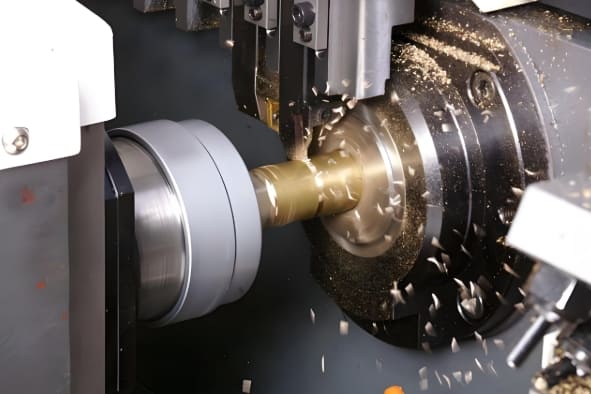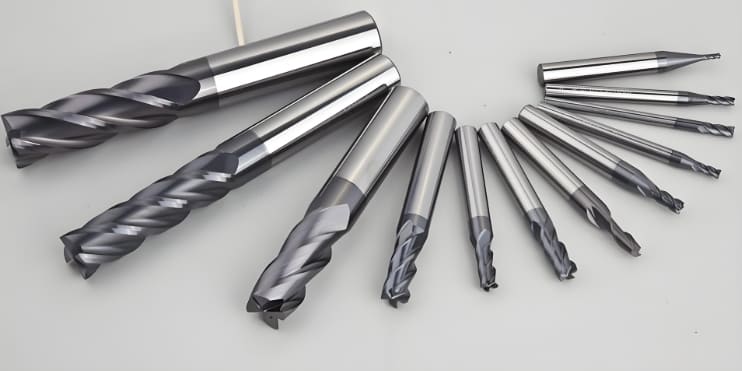What is CNC Turning?
CNC turning uses numerical control technology to achieve precise coordination between the rotating workpiece and the cutting tool, enabling efficient machining of complex rotational parts with accuracy up to ±0.01 mm. It covers various operations such as external turning, internal boring, facing, and threading, and supports a wide range of tool materials to handle aluminum alloys, high-temperature alloys, and more. With high efficiency and consistent quality, modern CNC turning centers integrate milling and drilling capabilities, allowing “Done in One” manufacturing in a single setup and significantly boosting industrial production capacity. If this interests you, let’s continue reading.
What is CNC Turning?
CNC turning (Computer Numerical Control Turning) is a core precision machining technology in modern manufacturing. Over the past forty years in the industry, I have witnessed its evolution from simple contour cutting to today’s advanced multi-axis, turn-mill compound processes. At its core, CNC turning uses computer-controlled lathes to precisely coordinate the movement of the workpiece and cutting tools, efficiently removing material to produce high-precision, complex rotational parts. This technology has completely changed the traditional reliance on operator skills, pushing manufacturing precision to ±0.01mm or even higher.

Types of CNC Turning Operations
CNC turning is not a single technology, but rather a set of precision operations, including:
-
External turning: The most basic and common process, machining the outside surface to achieve precise diameters and surface finishes.
-
Internal turning (boring): Using long, slender tools to cut inside walls, especially important for deep holes with high depth-to-diameter ratios.
-
Facing: Machining the end face perpendicular to the rotation axis to ensure flatness and squareness.
-
Grooving and parting: Precisely cutting grooves or completely parting off the workpiece.
-
Thread turning: Accurately machining single- or multi-start threads.
-
Form turning: The key method for producing complex contour parts.
What Types of Tools Are Commonly Used in CNC Turning?
Choosing the right tool is crucial for both efficiency and quality:
-
External turning tools: 80° diamond inserts are highly versatile; 55° inserts are suitable for long, slender shafts.
-
Boring bars: High rigidity and anti-vibration design are essential, with internal coolant channels needed for deep-hole machining.
-
Grooving and parting tools: Narrow blades reduce material waste, and precision inserts guarantee perpendicularity.
-
Threading tools: 60° tip angles are standard for most threads; special threads may require custom inserts.
Insert materials include:
-
Carbide: The workhorse for efficient machining, with coatings for enhanced durability.
-
Ceramics: Ideal for high-speed cutting of hardened steel.
-
CBN (Cubic Boron Nitride): The best for turning hard materials over 45 HRC.
-
PCD (Polycrystalline Diamond): The ultimate choice for mirror-finish machining of non-ferrous metals.

Advantages of CNC Turning
After decades of validation, CNC turning’s advantages are undeniable:
-
Ultra-high precision and repeatability: Consistently achieves IT6–IT7 tolerances (micron-level).
-
Excellent surface quality: Surface roughness Ra 0.4μm or better can be reached directly.
-
Complex geometry capability: Easily handles eccentric, curved, and compound structures.
-
Amazing production efficiency: Automated continuous machining boosts efficiency over manual processes by more than 300%.
-
Reduced human error: Programmed control eliminates quality variation from operator skill differences.
-
Wide material compatibility: From aluminum alloys to high-temperature alloys, all can be machined efficiently.
Difference Between CNC Lathe and CNC Turning Center
Rapid Model’s turning centers are a great example of this technology integration: equipped with a high-torque B-axis power head that can perform radial drilling, slot milling, and even tapping while turning. Together with high-rigidity linear guideways and a thermal compensation system, it achieves measured roundness error under 3μm for aerospace precision parts, truly delivering “Done in One” high-efficiency precision manufacturing.

